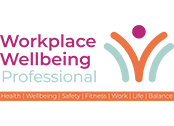Every day, thousands of people across the UK go to work unaware that their workplace could one day become the scene of a life-or-death emergency.
One in seven (15%) cardiac arrests happen in the workplace, yet many employers still don’t have a defibrillator on site. It’s a gap that could cost lives – and one that can be closed with simple, decisive action.
The Case for Defibrillators in the Workplace
Cardiac arrest is one of the most critical medical emergencies, and every minute without CPR and defibrillation reduces a person’s chance of survival by around 10%. The British Heart Foundation estimates that early CPR and access to a defibrillator can more than double survival rates.
Despite this, these life-saving devices are far from commonplace in UK workplaces. Without the legal requirement to provide one in the workplace, millions of employees remain vulnerable if the unthinkable happens.

In those crucial first minutes, it’s vital for colleagues to know how to give CPR. But to raise the chances of survival, it’s equally important for colleagues to have fast access to a defibrillator and the confidence to use one. That’s why ensuring every workplace is equipped with a defibrillator is not just good practice, it’s a moral imperative.
Beyond Compliance: A Duty of Care That Saves Lives
Too often, health and safety can be seen through the lens of compliance. But when it comes to cardiac arrest, the real question isn’t just “what does the law require?” – it’s “what could save a life?”.
Employers have a duty of care to protect staff, visitors, and customers. Cardiac arrest can happen to anyone, anywhere, regardless of age or health. Whether it’s an office, construction site, retail store or warehouse, medical emergencies can happen anywhere. Installing a defibrillator is a simple, practical step that can transform survival outcomes and create a culture of preparedness.
A defibrillator isn’t just a device; it’s a statement that an organisation values its people and is ready to protect them. In wellbeing terms, it demonstrates care that goes far beyond day-to-day support – it’s about being ready when it’s a matter of life and death.
Simplicity Saves Lives
One of the barriers to widespread adoption has been a perception that defibrillators are complex or intimidating to use. At St John Ambulance, we’ve seen the consequence of that fear first-hand. That’s why we designed the HEART defibrillator range to be among the easiest to use, with clear, step-by-step guidance that walks anyone through the process.

Small, lightweight and robust, the HEART One and HEART Two units are suitable for every type of workplace, from busy corporate offices to factories, shops, and schools. Their simplicity means that even those without formal first aid training can act quickly and confidently, guided every step of the way. The HEART Two even comes with an option to change the language from English so the defibrillator can be personalised to suit your workplace, and save precious moments with easy-to-understand instructions.
Crucially, every feature of the HEART defibrillator is informed by St John Ambulance’s 150 years of experience in emergency care. From ergonomic design to intuitive prompts, each detail exists to remove hesitation, reduce panic and empower people to take action because in cardiac arrest, every second counts.
A Ripple Effect of Lifesaving
When a workplace installs a defibrillator, its impact extends far beyond its walls. That’s why St John Ambulance’s HEART initiative was built on the principle of paying it forward. Every time a HEART defibrillator helps save a life, the manufacturer donates another device to a local community group and replaces the pads of the unit used. One life saved becomes many more protected.
In addition, all profits from the sale of HEART defibrillators are reinvested into St John Ambulance’s charitable work, funding the volunteers, training and equipment that keep communities safe across the country. By choosing HEART, employers aren’t just equipping their workplaces; they’re directly contributing to a nationwide effort to make first aid accessible to all.
A New Standard for Wellbeing
Workplace wellbeing doesn’t stop at fruit bowls and discounted gym memberships. Today, it’s about creating environments where people feel physically, mentally and emotionally safe. Having a defibrillator on site is one of the clearest demonstrations of that commitment.
By investing in defibrillators and first aid training, employers aren’t just fulfilling a health and safety obligation – they’re building a culture of compassion and preparedness that saves lives. A workplace equipped with a HEART defibrillator is one that’s ready to protect its employees, and that readiness extends into the wider community, helping to protect even more lives.
At St John Ambulance, we believe that when you put the power of first aid into everybody’s hands, you create stronger, safer workplaces – and a nation better equipped to care for one another.
For more information, visit sja.org.uk/heart-wwp


